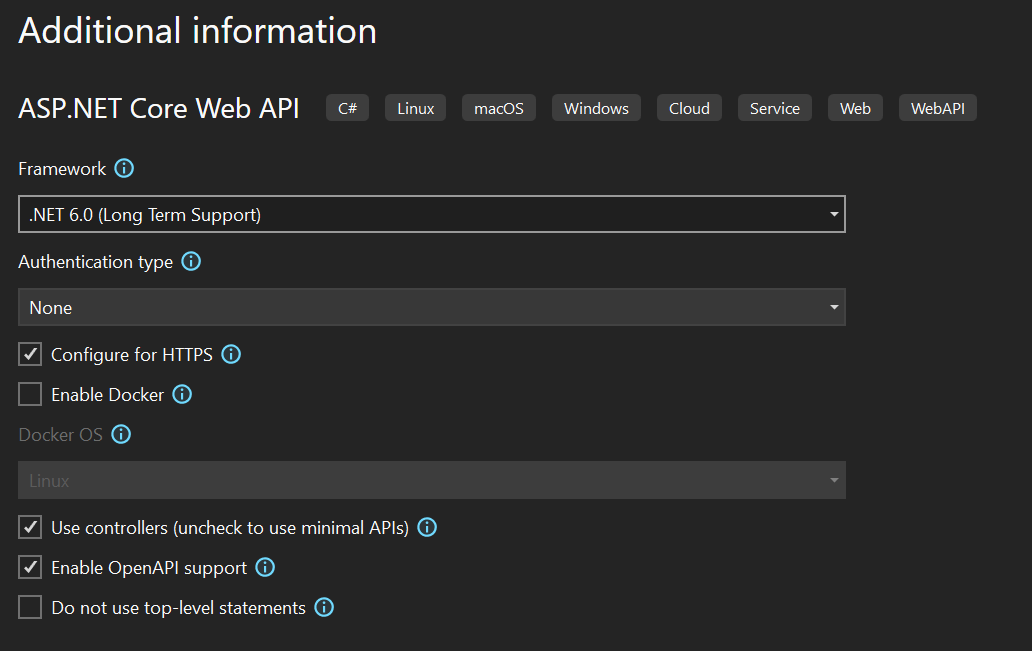Swagger API Documentation
Introduction
Let’s start by sharing our responses to the questions from today’s prep in two Slack waterfalls.
- Why would someone use Swagger API Documentation?
- What questions to you have about Swagger?
With your partner, discuss the following question. Be prepared to share your thoughts when we come back together.
How do you think Swagger might be helpful for this week’s this mini-project?
Adding Swagger to an API project
Swagger is an incredibly popular tool, and luckily for us, it’s already a part of the .NET framework!
To generate the swagger UI, when creating a new API project make sure that Enable OpenAPI support is checked.


Once you’ve checked that box, when running your API application, your browser will automatically direct you to the Swagger UI page!
If you’re curious about the details, these are the lines that are added to the Program.CS file when you check that box and enable swagger.
var builder = WebApplication.CreateBuilder(args);
// Add services to the container.
builder.Services.AddControllers();
// Learn more about configuring Swagger/OpenAPI at https://aka.ms/aspnetcore/swashbuckle
builder.Services.AddEndpointsApiExplorer();
builder.Services.AddSwaggerGen(); <--- Swagger setup line 1
var app = builder.Build();
// Configure the HTTP request pipeline.
if (app.Environment.IsDevelopment())
{
app.UseSwagger(); <--- Swagger setup line 2
app.UseSwaggerUI(); <--- Swagger setup line 3
}
app.UseHttpsRedirection();
app.UseAuthorization();
app.MapControllers();
app.Run();